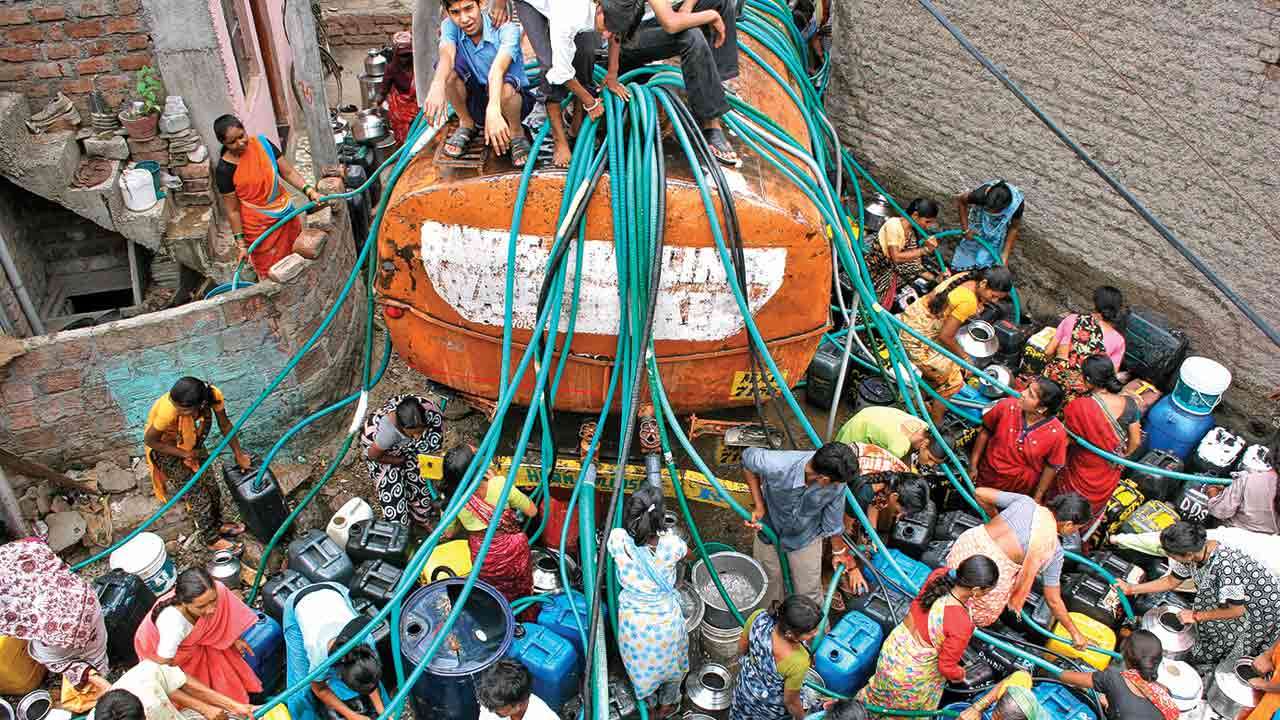
With the economy poised for high growth, rapid urbanisation has become a striking feature of emerging India. High growth in urban population means higher demand for water for municipal uses and larger quantum of wastewater. The fact that more than 50 percent of the country’s GDP comes from urban centres highlights the criticality of water management in cities. Historically cities were located on the banks of rivers and lakes. As population grew, water from these sources became inadequate to meet the rising demands, while effluents polluted water bodies. As long as cities and towns remained small, they could meet their deficits by drilling wells. But as they grew into metros and mega cities, they had to depend on imported water at a high cost. Hyderabad mainly gets water from reservoirs on Krishna and Godavari; Ahmedabad city gets water from Narmada Main Canal.
Urban water problems are becoming complex and difficult to deal with. Even with imported water, cities are not able to cope with the escalated demands for various uses, while the capacity to treat wastewater and monitor water quality remains inadequate. Per capita supply is much lower than the desired level of 140 lpcd in most cities and towns, forcing people to depend on private wells and expensive tanker water, the poor being the worst sufferers. With widespread chemical contamination — nitrates, fluorides, salinity and even arsenic — use of groundwater for human consumption comes at a huge public health cost. Treating this contaminated water is costly.
With the exception of one or two, no city in India gets public water supply 24 X 7, forcing residences to install their own mini water supply systems. Water pipelines in many cities are very old with heavy leakages. Illegal water tapping is rampant in most cities and towns, leading to revenue losses. Pollution is a serious challenge. Only around 37 percent of the wastewater from metros, Class I and Class II cities is treated to desirable levels. Untreated effluents disposed-off into lakes and rivers also contaminate groundwater.
At the root of the urban water crisis lies our inability to plan water supply and wastewater treatment in an integrated manner. The urban local bodies merely try to catch up with the unplanned growth of cities by adding to the existing supply infrastructure and sources in a piecemeal fashion. In new areas, residential complexes come up much before water supply and sewerage lines are laid. No Indian city does planning that realistically estimates the future water demands. For example, if the government taps water from a reservoir or lake it forgets to account for the fact that farmers may already be using the water for irrigation. This paves the way for a water shortage and can result in conflict.
In most large cities, water supply metering and pricing is only partial. In smaller cities and towns, metering is almost absent. As a result, there is no incentive to use water efficiently. Water supply is heavily subsidised in most Indian cities, resulting in huge revenue deficit. Politicians take a lot of pride in promising ‘free water’ under the pretext that it helps the poor, without realizing that free water comes with a huge hidden cost to the society and urban water users. For society, it is the resource which is depleted and environmental degradation caused by every unit of water supplied and wastewater generated, respectively. For the consumer, it is the inadequate and unreliable supplies and the poor quality of water consumed, which induces a social cost in the form of public health hazards and opportunity costs. The policy of free or heavily subsidised water ruins the finances of the utilities, severely limiting their ability to build, run, maintain and upgrade their water systems.
The solution lies in long-term investments in infrastructure to transfer water from surplus regions, and instruments and institutions for demand management. Even the cities in acutely water-scarce regions can find enough water to meet their needs, provided infrastructure is built for water transport. In very high rainfall, hilly areas, harvesting of rainwater from roof catchments is a viable alternative to expensive water transfers. Demand for water can be reduced through efficient pricing and rationing, as shown by experience from cities in US, Israel, France and Australia and the city of Colombo. It starts with metering of water supply. This should be complemented by either well-designed taxes or enforcement of pollution control norms to create disincentive for polluters, depending on the situation, with due consideration to the transaction cost. The revenue from water charge and pollution tax can be used for leakage reduction measures, new source creation, water and wastewater treatment, etc.
Many from civil society and political dispensation who advocate highly subsidised water under the pretext of helping the poor know well that in such situations, it is one’s social status, and financial and political clout, that determine access to water. They ignore the fact that the ultra-poor families living in cities do not have water connections at their dwellings to avail off the benefit of ‘free water’. In the developed countries, utilities resort to public awareness and education to influence consumer behaviour only after exhausting options such as water pricing, water tax and pollution tax. Unfortunately, in India we begin and end with awareness programmes and shy away from trying politically inconvenient options such as metering and pricing. For improved water supply, we have no option but to design policies to align social goals with private interests.
The author is Executive Director of Institute for Resource Analysis and Policy (IRAP), Hyderabad. He is the author of six books and five edited volumes on water, energy and agriculture. Views are personal